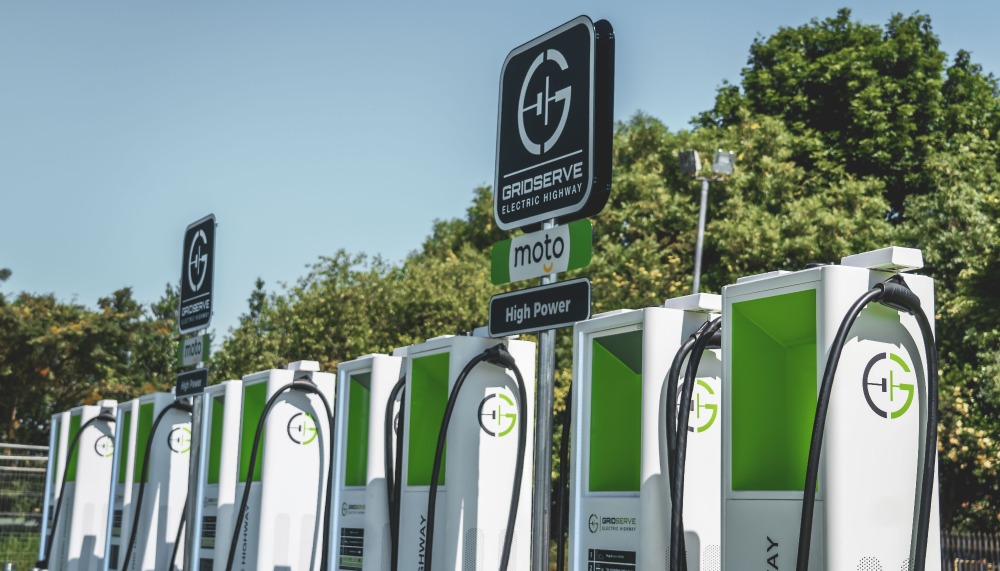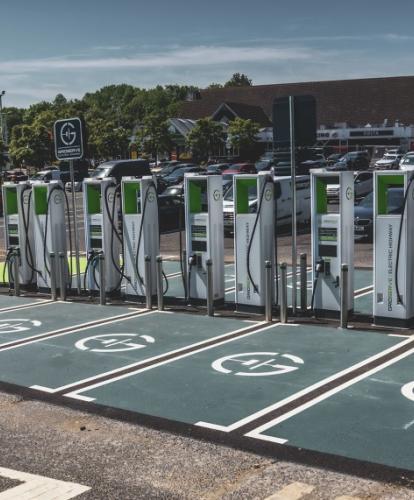A new electric vehicle (EV) charging location has opened at Moto Ferrybridge with six new ultra-rapid chargers. Behind the scenes, however, they are being powered by a microgrid solution that uses second-life batteries, in conjunction with vegetable oil generators.
Located on the interchange of the M62/A1(M), accessible from both major roads in both directions, the microgrid has enabled GRIDSERVE to bring six of the new charge points online to immediately support customer charging needs.
The permanent grid connection will come online in a few months' time, and will comprise 12 ultra-rapid charge points.
The microgrid solution features a 150kW/150kWh battery pack, sourced from second-life car batteries, that controls the supply of power to the EV charge points and is supplied by vegetable oil generators.
Vegetable oil generators produce 90% less carbon emissions than traditional generators and also create less noise output.
In order to stay net zero, GRIDSERVE is planting trees to offset the remaining 10% of carbon emissions this process is unable to remove.
The purpose of this temporary solution is to negate the effects of delays with installations, which usually take anywhere from six to 18 months. Delays at any stage can have a knock-on effect, so providing an interim charging solution means that GRIDSERVE can continue to commit to its pledge to innovate and deliver its charging network, and accelerate its energisation timeframes.

The permanent grid connection will come online in a few months' time, and will comprise 12 ultra-rapid charge points.
“GRIDSERVE’s purpose is to deliver sustainable energy and move the needle on climate change, and we are committed to delivering net zero transport across the UK in the earliest possible timeframes,” said Toddington Harper, CEO at GRIDSERVE.
“In particular, we are focussed on meeting the Government’s target of delivering at least six High Power chargers at our motorway partner locations by the end of this year.
“Electric Super Hubs typically require new grid connections, which are outside of our control and often take much longer to deliver than installing all the chargers.
“As a result, we’ve been working through solutions to get chargers working as quickly as possible, and we are excited to trial this microgrid solution running on batteries and vegetable oil, as this has enabled us to get the chargers operating many months before the grid connection was available.
“It’s not a perfect solution, hence to maintain net zero we have arranged to plant trees to offset any carbon emissions produced, but on balance, as an interim solution we feel it makes sense.
“Of course, if there are people out there who have even better interim solutions that can be delivered within the timeframes we are working to, we would be delighted to hear from you.”
The microgrid at Ferrybridge is a test site for GRIDSERVE, which will be monitored to understand the customer experience, charging speeds and overall feedback, while awaiting grid connection. Customers using the site are invited to share their feedback through connect@gridserve.com.



